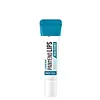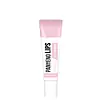What's inside
What's inside
 Key Ingredients
Key Ingredients

 Benefits
Benefits

 Concerns
Concerns

 Ingredients Side-by-side
Ingredients Side-by-side

Polybutene
Paraffinum Liquidum
EmollientCaprylic/Capric Triglyceride
MaskingEthylene/Propylene/Styrene Copolymer
Butylene/Ethylene/Styrene Copolymer
Olea Europaea Fruit Oil
MaskingHelianthus Annuus Seed Oil
EmollientMacadamia Integrifolia Seed Oil
Skin ConditioningButyrospermum Parkii Butter
Skin ConditioningArgania Spinosa Kernel Oil
EmollientAlcohol
AntimicrobialCetearyl Olivate
Sorbitan Olivate
EmulsifyingTocopheryl Acetate
AntioxidantParfum
MaskingBHT
AntioxidantPanthenol
Skin ConditioningCI 45410
Cosmetic ColorantPolybutene, Paraffinum Liquidum, Caprylic/Capric Triglyceride, Ethylene/Propylene/Styrene Copolymer, Butylene/Ethylene/Styrene Copolymer, Olea Europaea Fruit Oil, Helianthus Annuus Seed Oil, Macadamia Integrifolia Seed Oil, Butyrospermum Parkii Butter, Argania Spinosa Kernel Oil, Alcohol, Cetearyl Olivate, Sorbitan Olivate, Tocopheryl Acetate, Parfum, BHT, Panthenol, CI 45410
Polyisobutene
Ethylhexyl Palmitate
EmollientPolyglyceryl-2 Triisostearate
EmulsifyingOzokerite
Emulsion StabilisingRicinus Communis Seed Oil
MaskingDimer Dilinoleyl Dimer Dilinoleate
EmollientSorbitan Sesquioleate
EmulsifyingCetearyl Olivate
Sorbitan Olivate
EmulsifyingWater
Skin ConditioningPanthenol
Skin ConditioningButyrospermum Parkii Butter
Skin ConditioningCaprylic/Capric Triglyceride
MaskingHydrogenated Castor Oil
EmollientCamellia Sinensis Seed Oil
HumectantMacadamia Ternifolia Seed Oil
EmollientSimmondsia Chinensis Seed Oil
EmollientTocopherol
AntioxidantHoney Extract
HumectantLycium Chinense Fruit Extract
AntioxidantVaccinium Macrocarpon Fruit Extract
AstringentFragaria Chiloensis Fruit Extract
Skin ConditioningRubus Idaeus Fruit Extract
AstringentMorus Nigra Fruit Extract
Skin ConditioningRubus Fruticosus Fruit Extract
AstringentRibes Nigrum Fruit Extract
AstringentVaccinium Angustifolium Fruit Extract
Skin ProtectingVaccinium Myrtillus Fruit Extract
Skin ConditioningEuterpe Oleracea Fruit Extract
1,2-Hexanediol
Skin ConditioningSodium Hyaluronate
HumectantParfum
MaskingPolyisobutene, Ethylhexyl Palmitate, Polyglyceryl-2 Triisostearate, Ozokerite, Ricinus Communis Seed Oil, Dimer Dilinoleyl Dimer Dilinoleate, Sorbitan Sesquioleate, Cetearyl Olivate, Sorbitan Olivate, Water, Panthenol, Butyrospermum Parkii Butter, Caprylic/Capric Triglyceride, Hydrogenated Castor Oil, Camellia Sinensis Seed Oil, Macadamia Ternifolia Seed Oil, Simmondsia Chinensis Seed Oil, Tocopherol, Honey Extract, Lycium Chinense Fruit Extract, Vaccinium Macrocarpon Fruit Extract, Fragaria Chiloensis Fruit Extract, Rubus Idaeus Fruit Extract, Morus Nigra Fruit Extract, Rubus Fruticosus Fruit Extract, Ribes Nigrum Fruit Extract, Vaccinium Angustifolium Fruit Extract, Vaccinium Myrtillus Fruit Extract, Euterpe Oleracea Fruit Extract, 1,2-Hexanediol, Sodium Hyaluronate, Parfum
 Reviews
Reviews

Ingredients Explained
These ingredients are found in both products.
Ingredients higher up in an ingredient list are typically present in a larger amount.
This ingredient is also known as shea butter. It is an effective skin hydrator and emollient.
Emollients help soothe and soften your skin. It does this by creating a protective film on your skin. This barrier helps trap moisture and keeps your skin hydrated. Emollients may be effective at treating dry or itchy skin.
Shea butter is rich in antioxidants. Antioxidants help fight free-radicals, or molecules that may harm the body. It is also full of fatty acids including stearic acid and linoleic acid. These acids help replenish the skin and keep skin moisturized.
While Shea Butter has an SPF rating of about 3-4, it is not a sunscreen replacement.
Shea butter may not be fungal acne safe. We recommend speaking with a professional if you have any concerns.
Learn more about Butyrospermum Parkii ButterThis ingredient is an emollient, solvent, and texture enhancer. It is considered a skin-softener by helping the skin prevent moisture loss.
It helps thicken a product's formula and makes it easier to spread by dissolving clumping compounds.
Caprylic Triglyceride is made by combining glycerin with coconut oil, forming a clear liquid.
While there is an assumption Caprylic Triglyceride can clog pores due to it being derived from coconut oil, there is no research supporting this.
Learn more about Caprylic/Capric TriglycerideCetearyl Olivate is an emulsifier and texture enhancer. It is derived from the fatty acids of olive oil and Cetearyl alcohol, and is biodegradable.
As an emulsifier, it is used to prevent oils and waters from separating. It can also
Manufacturers use the name Olivem 1000. This ingredient has been found to preserve the natural microbiome of skin. Having a healthy microbiome helps keep our skin healthy and protects against harmful bacteria. This ingredient is grouped with Sorbitan Olivate under the name Olivem 1000.
Learn more about Cetearyl OlivatePanthenol is a common ingredient that helps hydrate and soothe the skin. It is found naturally in our skin and hair.
There are two forms of panthenol: D and L.
D-panthenol is also known as dexpanthenol. Most cosmetics use dexpanthenol or a mixture of D and L-panthenol.
Panthenol is famous due to its ability to go deeper into the skin's layers. Using this ingredient has numerous pros (and no cons):
Like hyaluronic acid, panthenol is a humectant. Humectants are able to bind and hold large amounts of water to keep skin hydrated.
This ingredient works well for wound healing. It works by increasing tissue in the wound and helps close open wounds.
Once oxidized, panthenol converts to pantothenic acid. Panthothenic acid is found in all living cells.
This ingredient is also referred to as pro-vitamin B5.
Learn more about PanthenolParfum is a catch-all term for an ingredient or more that is used to give a scent to products.
Also called "fragrance", this ingredient can be a blend of hundreds of chemicals or plant oils. This means every product with "fragrance" or "parfum" in the ingredients list is a different mixture.
For instance, Habanolide is a proprietary trade name for a specific aroma chemical. When used as a fragrance ingredient in cosmetics, most aroma chemicals fall under the broad labeling category of “FRAGRANCE” or “PARFUM” according to EU and US regulations.
The term 'parfum' or 'fragrance' is not regulated in many countries. In many cases, it is up to the brand to define this term.
For instance, many brands choose to label themselves as "fragrance-free" because they are not using synthetic fragrances. However, their products may still contain ingredients such as essential oils that are considered a fragrance by INCI standards.
One example is Calendula flower extract. Calendula is an essential oil that still imparts a scent or 'fragrance'.
Depending on the blend, the ingredients in the mixture can cause allergies and sensitivities on the skin. Some ingredients that are known EU allergens include linalool and citronellol.
Parfum can also be used to mask or cover an unpleasant scent.
The bottom line is: not all fragrances/parfum/ingredients are created equally. If you are worried about fragrances, we recommend taking a closer look at an ingredient. And of course, we always recommend speaking with a professional.
Learn more about ParfumSorbitan Olivate is created from the fatty acids in olive oil and sorbitol.
This ingredient is an oil in water emulsifier. It helps stabilize a product by preventing oils and waters from separating. Sorbitan Olivate also helps hydrate the skin.
Manufacturers sell sorbitan olivate under the name OliveM 1000. OliveM 1000 a multifunctional ingredient. It is self-emulsifying. According to a manufacturer, OliveM 1000 does not disrupt natural skin biome.
Due to its olive oil base, this ingredient may not be fungal-acne safe.
Learn more about Sorbitan Olivate